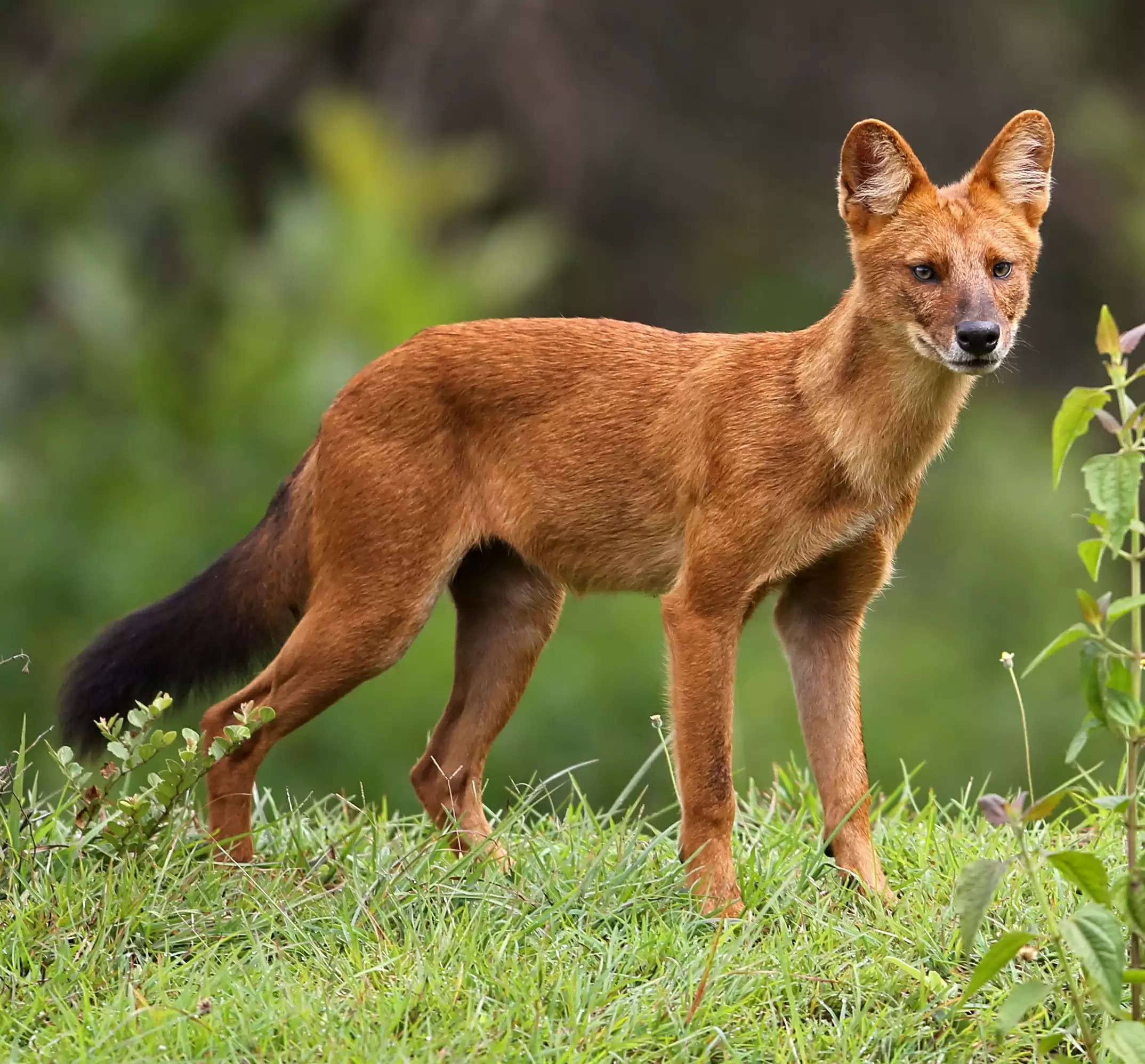How Wild Dogs (Cuon alpinus) use Chemical Weapon in Hunting
In the erstwhile Mewar state of Rajasthan, wild dogs were often encountered in the jungles and in the first half of this century they were in fairly good numbers. Mostly their area of operation was hilly tract southwest of Udaipur called Bhomat, which was teaming with wildlife those days. They are called Karu-Kutta in Mewar. They also used to migrate to the other jungles of Mewar. The last authentic news of the presence of Karu in Udaipur region was from Sendwara, about 25 km from Udaipur in the summer of 1970. Three dogs were sighted and scores of villagers drove them away. Thereafter I have not heard of the presence of these animals in the Udaipur region.
In 1923, my father T. H. Tehsin witnessed a hound of wild dogs on his way to Jaisamand. Jaisamand was a favourite hunting ground of the then Maharana and the place was teeming with all sorts of game available in this region. In these jungles the Maharana released some cheetal (Axis axis) and they too were thriving. About 2km from Jaisamand Lake there was an open patch in the jungle and here my father saw five wild dogs pursuing a cheetal stag. He stopped his buggy to see the chase. The dogs were running behind the stag in a V-shape formation. The stag was lacerated in the hindquarter. It appeared too exhausted and was panting heavily.
Suddenly the two dogs ahead in the formation increased their pace; one trotted ahead of the stag and the other remained parallel to its muzzle, just out of reach of its antlers. The dog ahead of the stag slowed it pace. The stag lowered its head slightly turning sideways to impale the dog with its antlers. My father was surprised to see why this cunning brute foolishly exposed itself to such a danger. It was apparent that within seconds the dog should be out of the field. But just at the time of striking, the dog raised its tail and the stag veered its head away from the dog, knocking the dog by its beam only. The other dog seized the opportunity of the stag’s defenceless posture and caught it by the muzzle. Immediately the other joined in and pulled down the stag.
From this incidence, it is clear that the dog during the pursuit accumulated the secretion in the duct situated in the upper half basal of the tail and at an appropriate time, when the animal was panting heavily, ejected the noxious secretion in front of the stag’s nostrils so that a good amount of nauseate repelling fumes could be inhaled by the stag. The exhausted stag turned its head away from the awful smell by reflex action towards the other dog.
The way these animals adopt a well calculated method of using their chemical weapon in overpowering their prey is simply marvellous and brilliant.
Originally Published in Cheetal (Journal of Wildlife Preservation Society of India):
Tehsin, R. H. (1986) How Wild Dogs (Cuon alpinus) Use Chemical Weapon In Hunting. Cheetal 27(3): 13
Also Published in Tiger Paper (Regional Quarterly Bulliten on Wildlife and National Parks Management):
Tehsin, R. H. (1986) How Wild Dogs (Cuou alpinus) Use Their Chemical Weapon in Hunting. Tiger Paper XIII (2): 23
(Reproduced with permission)
To join us on Facebook Click Here and Subscribe to UdaipurTimes Broadcast channels on GoogleNews | Telegram | Signal



